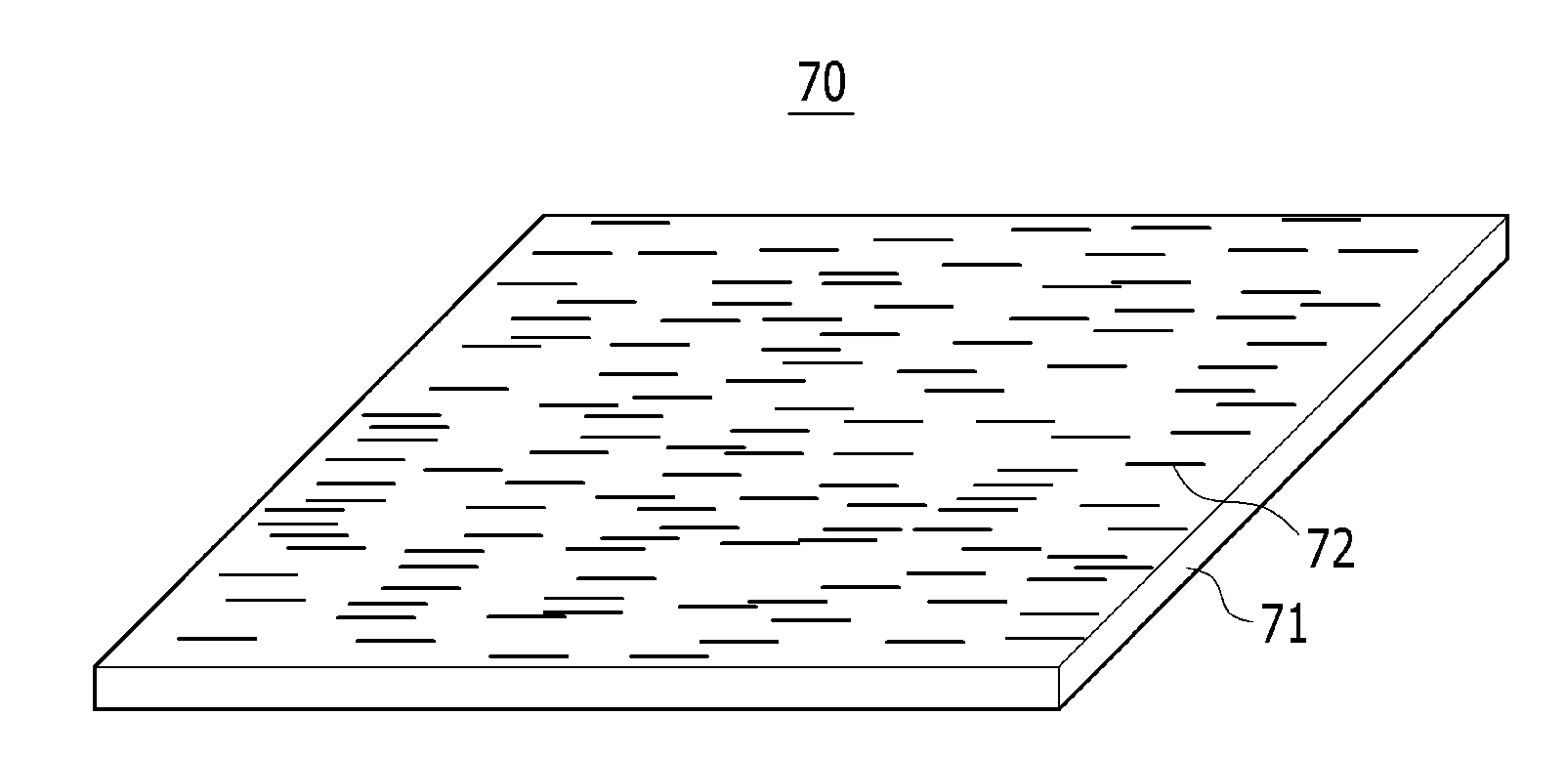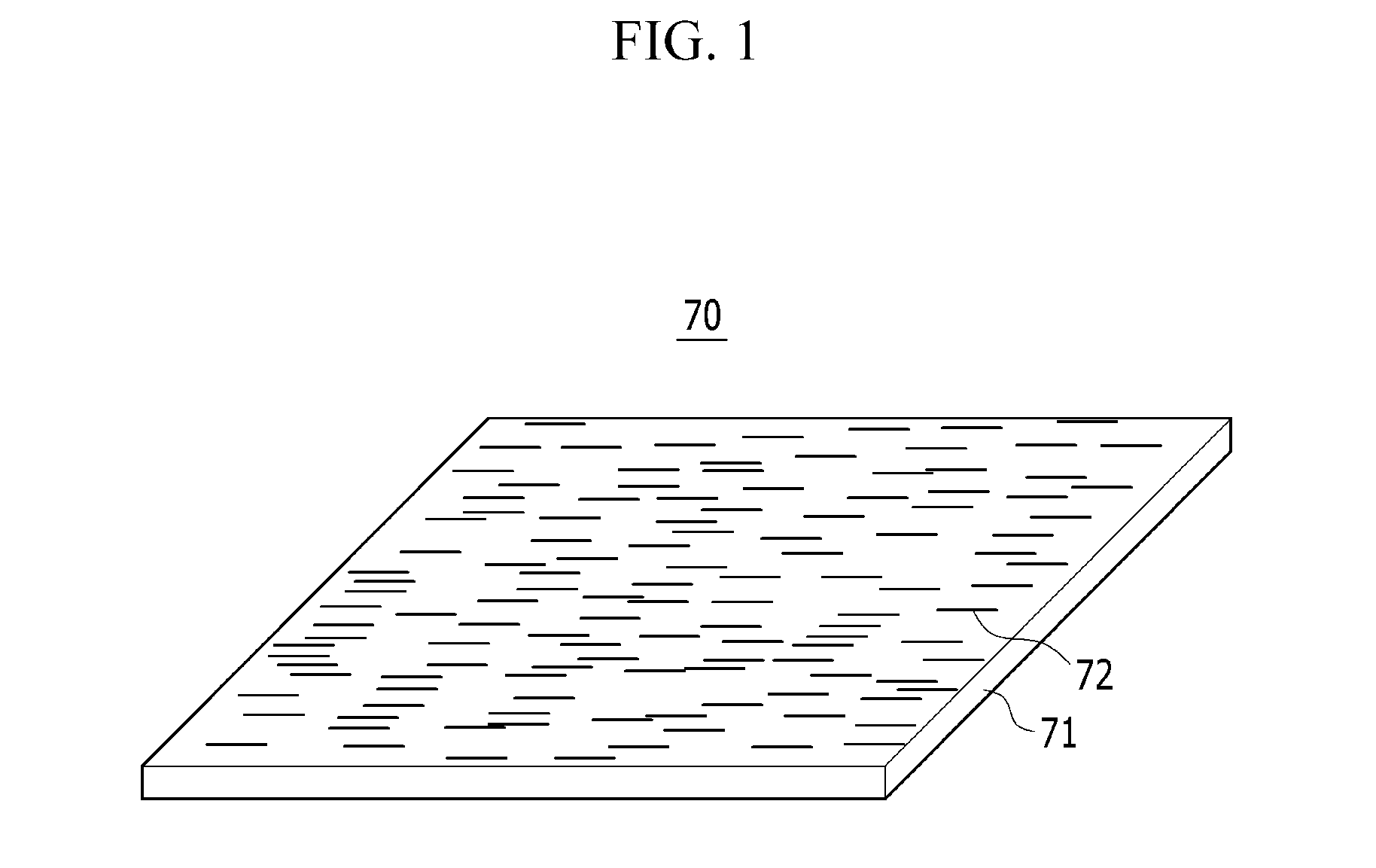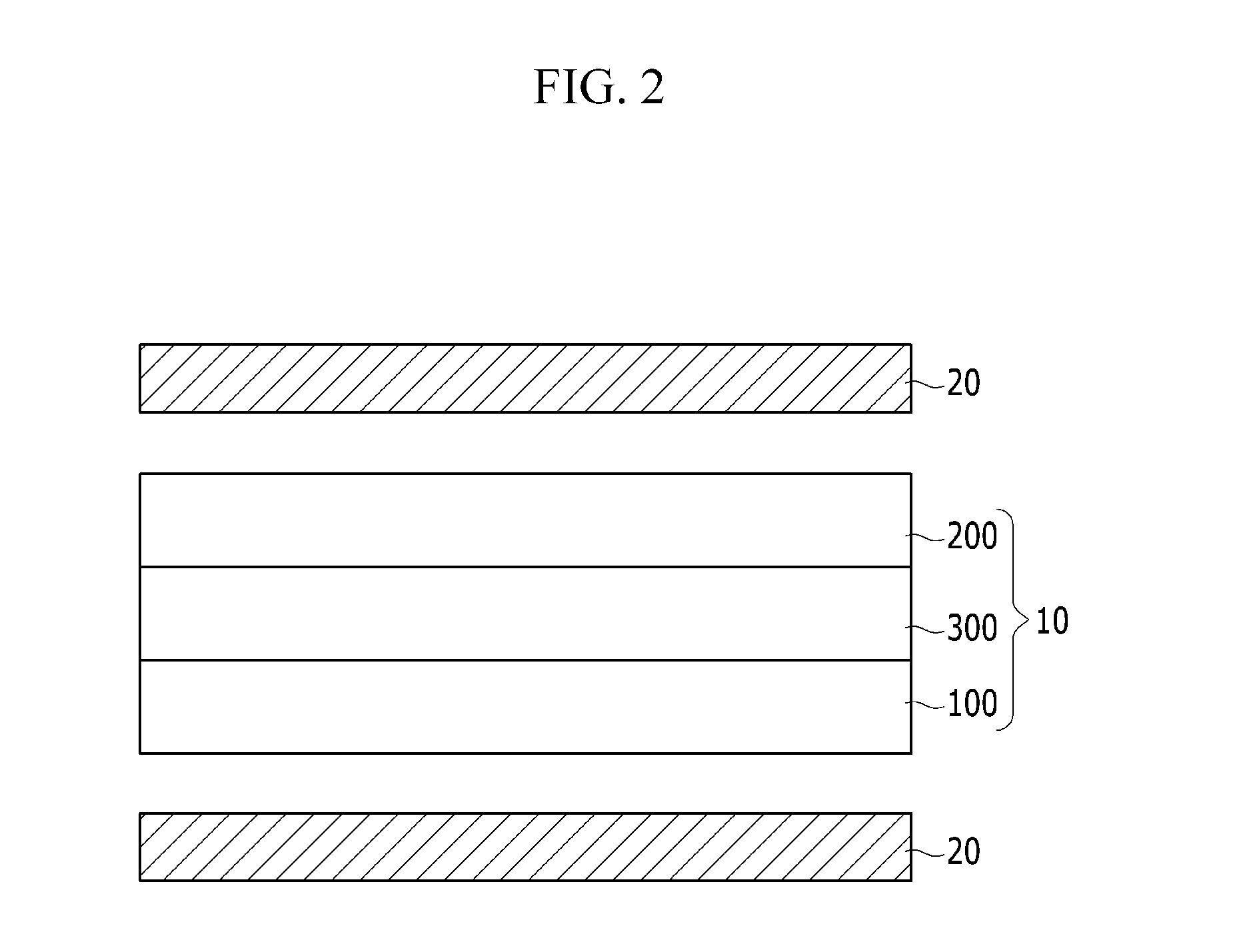Polarizing film and display device including the polarizing film
a technology of polarizing film and display device, which is applied in the direction of polarizing elements, instruments, applications, etc., can solve the problems of increasing the thickness of the display device, complicated polarizing plate including the polarizer and the protective layer, etc., and achieve the effect of improving the polarization properties
- Summary
- Abstract
- Description
- Claims
- Application Information
AI Technical Summary
Benefits of technology
Problems solved by technology
Method used
Image
Examples
synthesis example 1
[0171]1-1. Synthesis of Monoazo Compound
[0172]10 g (41.1 mmol) of 4-(4-nitrophenylazo)phenol (TCI, Japan) is dissolved in 200 mL of acetone, and 8.5 mL (48.9 mmol) of 1-bromooctane and 11.4 g (82.5 mmol) of potassium carbonate (K2CO3) are added thereto. The reaction mixture is refluxed and agitated at 60° C. for 24 hours and then cooled down to room temperature. The agitated mixture is concentrated and purified through silica gel column chromatography (CH2Cl2:n-hexane=2:1), obtaining 12.3 g (34.6 mmol) of a 4-nitro compound. The compound has a yield of 84%. 5.7 g (16.0 mmol) of the 4-nitro compound is dissolved in 150 mL of hot ethanol, and a solution prepared by dissolving 11.5 g (47.9 mmol) of Na2S.9H2O in hot ethanol and water is added thereto. The resulting mixture is agitated at 80° C. for 5 hours and cooled down to room temperature. Then, a precipitated crystal is filtered, washed several times with water, and dried, obtaining 4.3 g (13.2 mmol) of 4-amino-4′-octyloxyazobenzene...
synthesis example 2
[0184]456 mg (0.71 mmol) of a dichroic dye represented by the following Chemical Formula 1b is prepared according to the same method as Synthesis Example 1, except for using 3-chloroaniline instead of m-toluidine. The dichroic dye has a yield of 71%.
[0185]The dichroic dye represented by the above Chemical Formula 1b is analyzed by 1H NMR.
[0186]The 1H NMR analysis result is as follows.
[0187]1H NMR (300 MHz, CDCl3) δ (ppm): 0.90 (t, J=6.7 Hz, 3 H, CH3), 1.25-1.38 (m, 8 H, CH2×4), 1.45-1.49 (m, 2 H, CH2), 1.71-1.86 (m, 8 H, CH2×4), 3.46-3.50 (m, 4 H, NCH2×2), 4.06 (t, J=6.4 Hz, 2 H, OCH2), 6.24 (d, J=4.8 Hz, 1 H, ArH), 7.02 (d, J=9.0 Hz, 2 H, ArH), 7.61-8.12 (m, 10 H, ArH).
[0188]The dichroic dye represented by the above Chemical Formula 1b has a solubility parameter of 22.5.
synthesis example 3
[0189]450 mg (0.7 mmol) of a dichroic dye represented by the following Chemical Formula 1c is prepared according to the same method as Synthesis Example 1, except for using 4-amino-2-chloro-4′-octyloxyazobenzene instead of 4-amino-4′-octyloxyazobenzene and 3-chloroaniline instead of m-toluidine. The dichroic dye has a yield of 70%.
[0190]The dichroic dye represented by the above Chemical Formula 1c is analyzed by 1H NMR.
[0191]The 1H NMR analysis result is as follows.
[0192]1H NMR (300 MHz, CDCl3) δ (ppm): 0.90 (t, J=6.7 Hz, 3 H, CH3), 1.25-1.36 (m, 8 H, CH2×4), 1.45-1.50 (m, 2 H, CH2), 1.71-1.85 (m, 8 H, CH2×4), 3.43-3.47 (m, 4 H, NCH2×2), 4.06 (t, J=6.6 Hz, 2 H, OCH2), 6.21 (d, J=4.7 Hz, 1 H, ArH), 7.02 (d, J=9.0 Hz, 2 H, ArH), 7.59-8.11 (m, 10 H, ArH).
[0193]The dichroic dye represented by the above Chemical Formula 1c has a solubility parameter of 22.5.
PUM
| Property | Measurement | Unit |
|---|---|---|
| Temperature | aaaaa | aaaaa |
| Fraction | aaaaa | aaaaa |
| Fraction | aaaaa | aaaaa |
Abstract
Description
Claims
Application Information
 Login to View More
Login to View More - R&D
- Intellectual Property
- Life Sciences
- Materials
- Tech Scout
- Unparalleled Data Quality
- Higher Quality Content
- 60% Fewer Hallucinations
Browse by: Latest US Patents, China's latest patents, Technical Efficacy Thesaurus, Application Domain, Technology Topic, Popular Technical Reports.
© 2025 PatSnap. All rights reserved.Legal|Privacy policy|Modern Slavery Act Transparency Statement|Sitemap|About US| Contact US: help@patsnap.com



